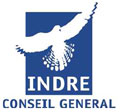| Cesarean Delivery on Maternal Request |
| (Ressource pour l’atelier 12)
NIH State-of-the-Science Conference : Cesarean Delivery on Maternal Request Despite the national goal of reducing rates of cesarean delivery to 15 percent of births established as part of Healthy People 2010, cesarean delivery rates have continued to increase. In 2004, 1.2 million or 29.1 percent of births in the United States were by cesarean delivery. An estimated 2.5 percent of births that year were cesarean deliveries performed on request, in the absence of medical necessity, and the rate of cesareans on request appears to be growing rapidly over time. The potential benefits of elective cesarean delivery as compared to vaginal delivery are not fully understood but are thought to include decreased risk of urinary incontinence, pelvic organ prolapse, anal sphincter damage, and fecal incontinence. Elective cesarean delivery also has the benefit of flexible timing for mother and physician. However, like any major surgical procedure, there are risks associated with cesarean delivery. Risks that are known to be higher for cesarean deliveries than for vaginal delivery include adverse reactions to anesthesia, breathing problems, bleeding, infection, urinary tract injury, and injury to the baby. In addition, recovery time following cesarean delivery is typically longer than for vaginal delivery. Given these risks, any decision to deliver by cesarean delivery when vaginal delivery is also available should be informed by the best possible information regarding potential health outcomes, good and bad, for both mother and baby. Toward that end, the National Institute of Child Health and Human Development and the Office of Medical Applications of Research of the National Institutes of Health will convene a State-of-the-Science Conference from March 27 to 29, 2006, to assess the available scientific evidence relevant to the following questions : • What is the trend and incidence of cesarean delivery over time in the United States and other countries (when possible separate by intent)? An impartial, independent panel is charged with reviewing the available published literature in advance of the conference, including a systematic literature review commissioned through the Agency for Healthcare Research and Quality. The first day and a half of the conference consists of presentations by expert researchers and practitioners, and open public discussions. On Wednesday, March 29, the panel will present a statement of its collective assessment of the evidence to answer each of the questions above. The panel will also hold a press conference to address questions from the media. The draft statement will be published online later that day, and the final version will be released approximately 6 weeks later. |
< Précédent |
Suivant > |
|---|




